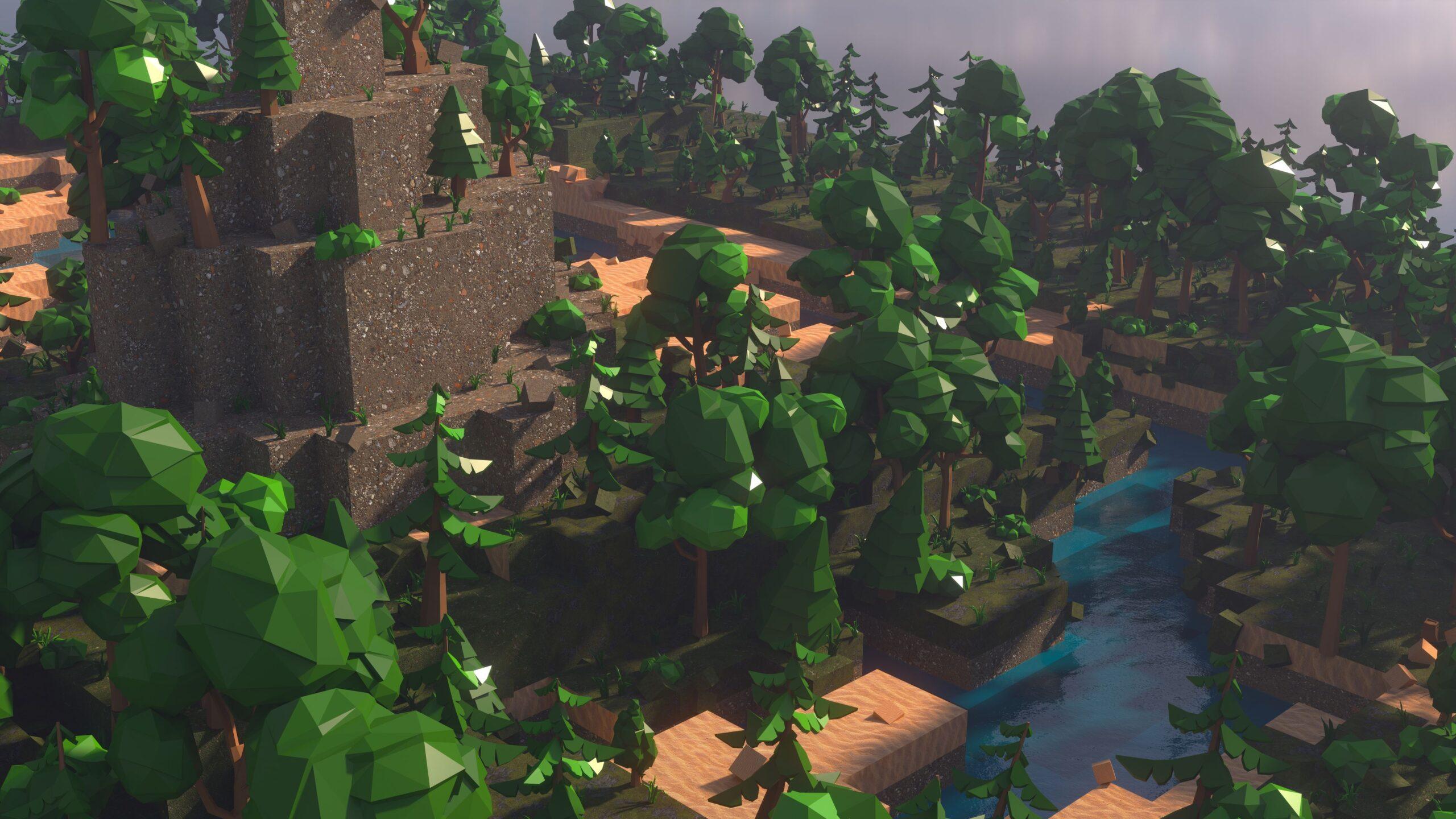If you’re looking to rent a Minecraft server, you’ll quickly face a crucial question: how much performance do you actually need – and what should you really be paying for it? The world of game hosting is full of bold promises, flashy pricing, and hidden trade-offs. While low-cost packages seem attractive at first, they often come with performance limitations that ruin the fun. On the other hand, premium options aren’t always worth the price.
This article breaks down how to evaluate hosting offers, what technical specs really matter, and how to make sure you’re not paying for features you’ll never use.
What Does Real Performance Cost – And What Are You Actually Getting?
Minecraft looks simple on the surface. Its blocky graphics can be deceiving – because behind every block, mob, or Redstone circuit, there’s a serious load on the server. Many players underestimate how much power is required to keep the game running smoothly, especially in multiplayer sessions with mods, plugins, or large world files.
One of the most important – and often overlooked – factors is single-core CPU performance. Minecraft is still primarily single-threaded, which means that the number of cores doesn’t matter nearly as much as the clock speed of a single core.
Here’s what really counts:
- Clock speed above 3.6 GHz (the higher, the better)
- Fast SSD storage for chunk loading and world data
- Sufficient RAM: 4 GB is fine for basic Vanilla, but you’ll need 6–10 GB for modded setups
Many budget plans offer 2 GB RAM for around €2.50/month. That’s only enough for two or three players doing light activity. Throw in a couple of farms or Redstone contraptions and the lag begins.
Price Means Nothing Without Context – Watch for Hidden Costs

Server rental pricing is just one piece of the puzzle. The fine print matters. Many “cheap” plans cut corners where it hurts most: stability, control, and scalability.
Common hidden issues or limitations:
- No access to full FTP – which limits how you manage your world files
- No support for mods or custom plugins
- Hard cap on player slots, even when RAM is sufficient
- Setup fees or steep charges for upgrades and cancellations
Many ultra-low-cost providers rely on overselling – they rent out more performance than they actually have, betting that not all customers are active at the same time. That leads to shared resource bottlenecks, lag spikes, or even temporary crashes during peak hours.
Even features like automated backups, DDoS protection, or basic server dashboards are often locked behind paywalls or excluded entirely from entry-level offers.
Realistically, a solid Minecraft server rental costs €8–15 per month for a balanced setup that doesn’t compromise on stability.
What Do You Actually Need? – Realistic Scenarios and Server Specs
Every Minecraft server has different demands. A couple of friends playing in a Vanilla world have very different needs compared to a PvP arena with active Redstone or a heavily modded roleplay server. To avoid overpaying – or underestimating your needs – match your use case to realistic hardware and pricing:
| Type of Server | Player Count | Recommended RAM | Monthly Price Range | Key Considerations |
| Casual Vanilla | 2–4 | 2–4 GB | €3–6 | Minimal load, no mods |
| Light Modpack | 4–6 | 6 GB | €8–12 | Forge/Fabric mods, small automation |
| PvP/Redstone Server | 6–10 | 8–10 GB | €12–18 | High activity, Redstone, plugin needs |
| Creative Build Server | 4–8 | 6–8 GB | €10–14 | Expansive worlds, exploration-heavy |
| Public Community Server | 10–20 | 10–12 GB | €16–25 | Needs uptime, traffic tolerance, mod/plugin mix |
Always consider how your players interact with the world. Five people mining in caves use fewer resources than two running multiple auto-farms or flying with Elytras across loaded chunks.
Shared Hosting or Dedicated Setup – What Fits Your Needs?
Not every Minecraft project needs full control. For private play or small groups, shared hosting offers a fast and cheap way to get started. But if you’re planning a modded world, public access, or long-term gameplay, performance and flexibility matter.
Shared Hosting:
- Affordable (from €3/month)
- Low technical effort
- Managed by the provider
Virtual Private Server (VPS):
- More RAM and dedicated CPU access
- Priced from €10/month
- Best for moderate modded servers or performance upgrades
Dedicated Server:
- Full machine access, complete flexibility
- Starts at €30/month and up
- Ideal for communities or advanced technical users
For many mid-level use cases, a VPS with a managed control panel (e.g. Pterodactyl or Multicraft) strikes the right balance. You get the performance without the maintenance headaches of a full root server.
How to Spot a Hosting Provider Worth Your Money

Renting a Minecraft server isn’t just a technical choice – it’s also about service quality, transparency, and trust. Look beyond pricing and evaluate how the provider operates.
Must-have qualities in a good host:
- Data centers based in Europe (if your player base is in the EU) for low ping
- Live support via chat or phone – especially outside business hours
- Daily automatic backups included in the base plan
- Clear and honest hardware details (no “up to” RAM or fake slot counts)
- Easy upgrade options without full reinstallation
- Flexible cancellation policy without hidden renewal clauses
Some of the better providers even offer trial servers or short-term plans with no strings attached – ideal for performance testing before a longer commitment.
✅ Server-Rental Checklist for a Smooth Minecraft Experience
| ✅ To Check | 💡 Why It Matters |
| Is the server location close to your player base? | Lower latency means smoother gameplay – ideally choose a European server if you’re in the EU. |
| Are RAM and CPU specs listed clearly? | No vague “up to” promises – you need dedicated resources, especially for mods or >5 players. |
| Does the host support mods, plugins, and custom setups? | Vanilla servers require less, but for Forge/Fabric or Spigot, proper support is essential. |
| Is there an easy-to-use control panel (e.g. Multicraft)? | Helps you manage players, files, restarts, and backups without coding knowledge. |
| Are daily automatic backups included in the plan? | Crucial for avoiding data loss due to crashes, errors, or griefing. |
| Can you cancel anytime without hidden fees? | Transparent providers offer monthly terms and no surprise charges. |
| Does the plan offer full FTP or SFTP access? | Full file access is needed for modpacks, world uploads, or plugin management. |
| Is real-time support available (not just email)? | Live chat or phone support is invaluable when things go wrong. |
| Are there real reviews (e.g. on Trustpilot)? | User feedback reveals recurring problems or exceptional service. |
| Does the host offer a trial or money-back guarantee? | A test period shows whether promised specs match real performance. |
Power Where It Matters
Rent a Minecraft server isn’t about chasing the lowest price – it’s about paying for the experience you actually want. Performance issues kill immersion faster than any glitch, and once you’ve got people joining your world, reliability is non-negotiable.
When you invest in smart specs and a transparent provider, you create a foundation that scales with your gameplay. Think long-term: great performance isn’t a luxury – it’s the entry fee for uninterrupted fun.
Image Source:
Дима Пучков & Drobot Dean & Seventyfour/Adobe Stock
